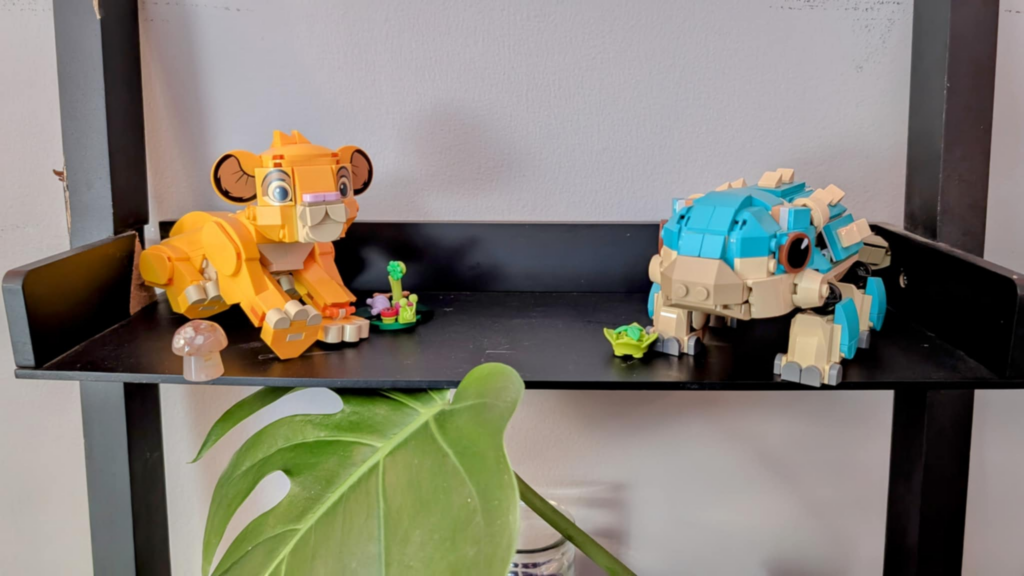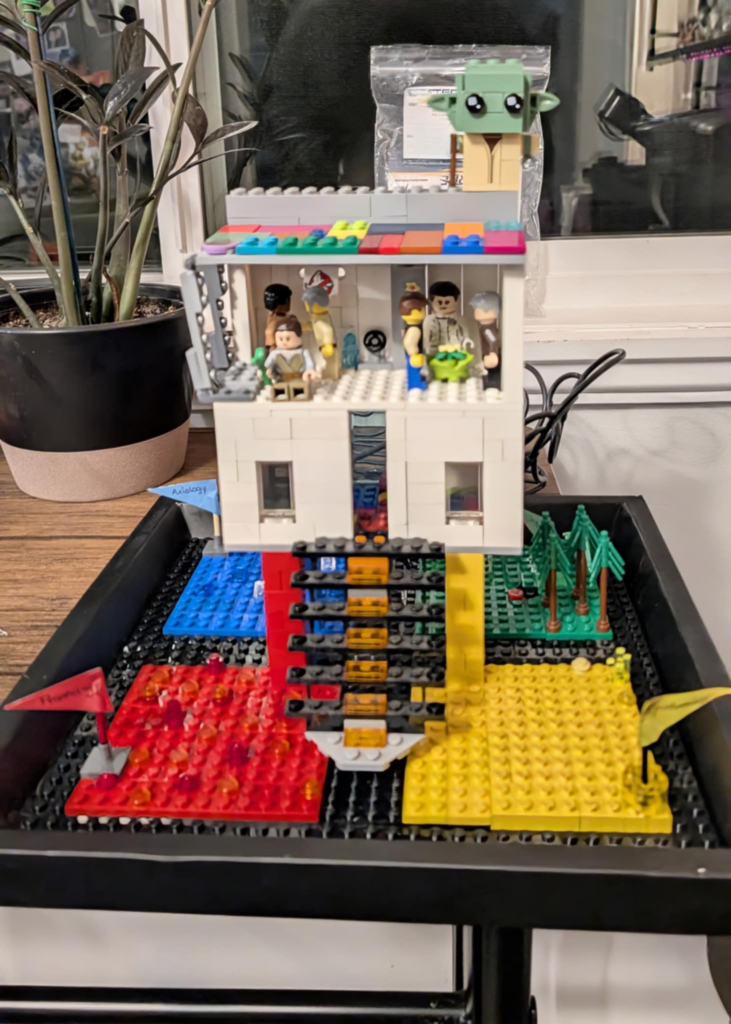
For the Foundations of Education course we take here in our teaching program, Dr. Hart Banack asked us, “If I am so, how might I teach?” He assigned us to make a representation of our ontology (what is real?), epistemology (how do we know stuff?), praxeology (why do we do things?), and axiology (what’s important?).

When thinking about how I might represent this, I knew I wanted to use Lego. I grew up with Lego, and it goes back to my roots. In my LEGO model, I started with a large, solid black base plate to represent my foundation and beliefs about education, my students and myself. Four pillars are connected to each quadrant, representing a value key to my ontology. I used green to convey honesty, blue for authenticity, yellow for curiosity and red for respect. In the center sits a staircase that reaches the next level, representing the educational journey. These stairs represent the upward path of growth and connect teachers and students. I hope to create a learning environment that is student-centered, authentic, and growth-oriented. I want to encourage the endless potential that lives within my students, so I hope to be flexible and evolve with them. I hope to foster an environment that allows students to feel safe to be themselves.

I chose yellow to represent my epistemology, symbolizing light, discovery, and the fire of curiosity I hope to ignite in my students. Inspired by Plutarch’s idea that education is about “lighting a fire,” I designed the second layer of my LEGO model with colorful tiles fitting together like puzzle pieces, reflecting diverse ways of constructing knowledge. Transparent windows signify accessibility, and a ladder connects areas of expertise, emphasizing knowledge as interconnected, scaffolded, and collaborative. This layer highlights the complexity of learning and the importance of fostering curiosity and connections in the classroom.

For me, red represents praxeology—the passion, purpose, and intentionality behind action. In my LEGO model’s third layer, flexible hinges illustrate the adaptability of teaching practices, while miniature figures depict diverse methods like group work, independent study, and inquiry. Changeable elements, such as a “no ghosts allowed” sign (no child overlooked), a steering wheel (student-driven learning), and plants (growth), reflect how practices evolve through feedback and reflection. This layer emphasizes intentional, adaptable, and growth-focused teaching.

I chose blue for my axiology, symbolizing justice, integrity, and authenticity—my core values. Blue evokes calm waters, reflecting my commitment to creating safe, welcoming spaces. The top layer of my teaching tower showcases a mosaic of colourful tiles representing inclusivity, respect, curiosity, and empathy, celebrating the beauty of diversity. At the tower’s peak, I placed Yoda, embodying the teacher I aspire to be: wise, patient, growth-focused, and adaptable.
As I built this tower, I realized this isn’t how I might teach—it’s how I will teach. I will foster a growth-oriented, inclusive, and adaptable environment where every student feels valued. I will guide my teaching with curiosity, respect, and authenticity to inspire meaningful connections. I will strive to light fires of learning while embracing the beauty of diversity. This is how I will teach.